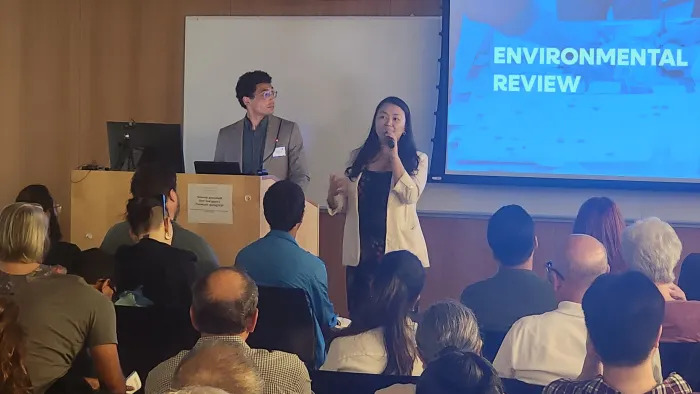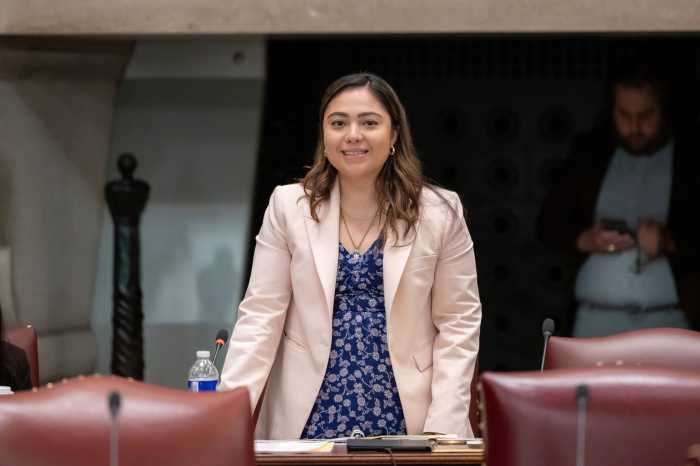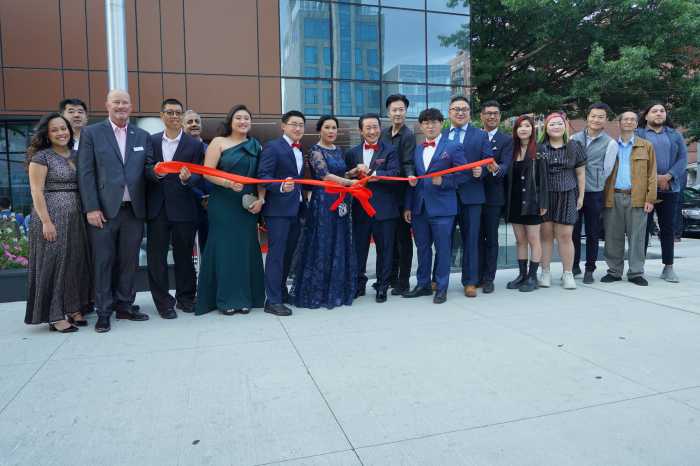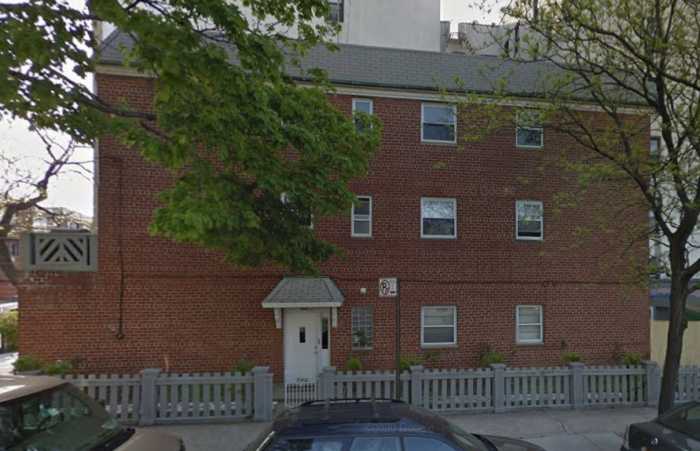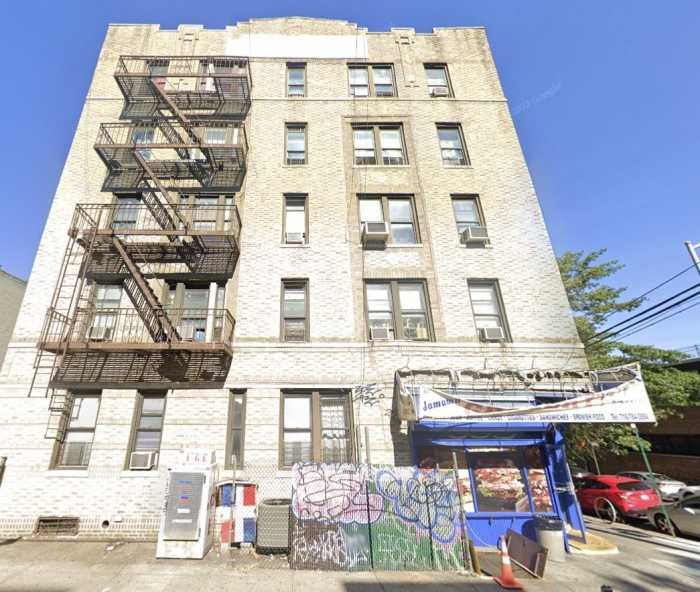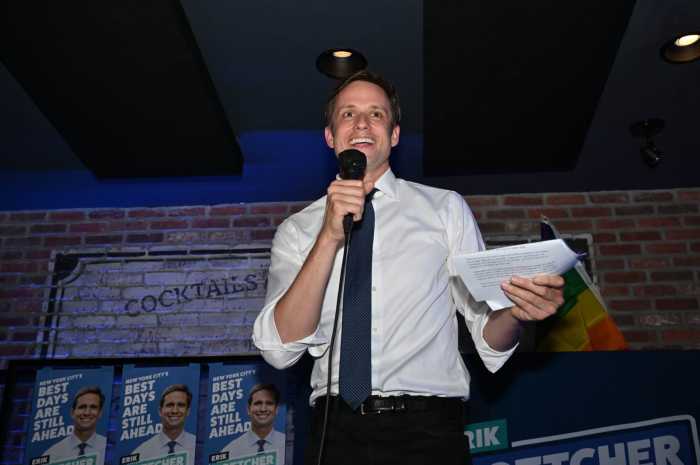Around 250 Long Island City residents attended a town hall hosted by Council Member Julie Won to share recommendations about the Long Island City Neighborhood Plan, “One LIC”, which aims to create a vision for the neighborhood encompassing affordable housing, job growth and public space investments.
The town hall, the third to take place during the community planning process for the neighborhood plan, took place at the City University of New York (CUNY) School of Law on Monday evening.
Council Member Won hosted the event alongside members of the Department of City Planning and WXY Studio.
Monday’s town hall allowed residents to receive updates on the progress made in the One LIC planning process to date and participate in workshops to provide community feedback.
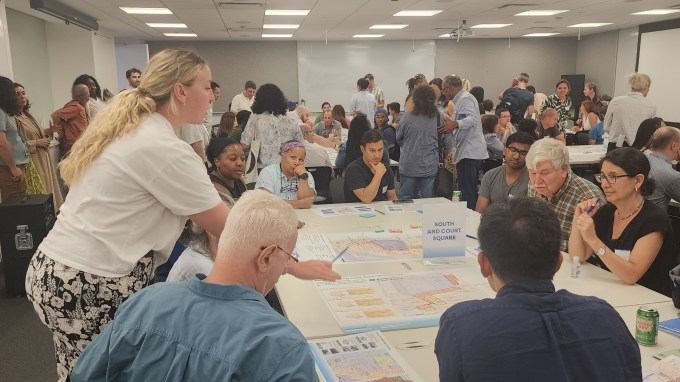
Long Island City residents received details of draft strategies for the neighborhood plan, which proposed zoning changes and listed seven “shared goals” for the project. These included protecting existing affordable housing in the community and creating new housing in the area, with an emphasis on affordable housing that serves a diverse range of households.
The draft strategies also put forward a plan to invest in existing parks and create new open spaces along the Long Island City waterfront, enhance connectivity with multi-modal public transportation while improving safety for cyclists and pedestrians and create a more resilient and sustainable Long Island City.
Furthermore, the draft strategies detailed plans to support existing businesses and the local art community, invest in neighborhood services, education and community programs and increase the knowledge and capacity of planning partners so that they can work together to shape the future of Long Island City.
The neighborhood plan encompasses the area from Gantry Plaza State Park on the East River to Queensbridge Houses and the Long Island City Industrial Business Zone in the north. It also stretches east to Court Square and 23rd Street and recommends investments and programming for all of Long Island City, including Queensbridge.
Representatives from the Department of City Planning said the One LIC plan will create 16,000 new homes, at least 4,000 of which will be affordable, and 16,000 new jobs across various sectors.
DCP officials said the plan will also create 7-9 acres of public space on the LIC waterfront, several new schools, safer streets, support for existing businesses and protection for existing tenants.
Monday’s town hall also saw a number of popular community suggestions shared that will no longer be considered, including proposals to include residential developments in the industrial business zone below Queensbridge Houses, known as the Industrial and Commercial Core.
DCP officials said the city is standing by its “city-wide commitment” to keep new residential units out of industrial business zones (IBZ), retaining IBZs for non-residential uses that provide jobs and services.
They also noted that the city is publishing an industrial action plan next year, which will offer an opportunity to revisit industrial business zone policy on a city-wide scale.
However, the issue proved divisive in the community workshops after the presentation, which offered residents an opportunity to provide feedback on several areas included within the neighborhood plan; Industrial and Commercial Core; South and Court Square; North; and Waterfront.
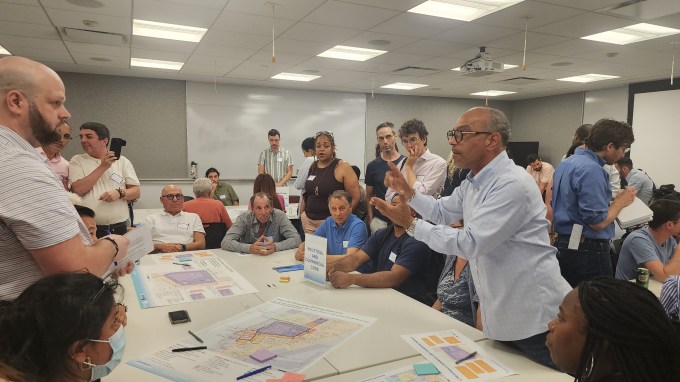
Residents who participated in the Industrial and Commercial Core workshop complained that the space should be a mixed-used zone, with manufacturing and commercial space on lower levels and residential units on higher levels.
Currently, the plan allows for industrial and commercial buildings of medium or medium-high density to be located within the IBZ.
Residents also claimed that the IBZ would isolate Queensbridge Houses from the rest of the area and make it difficult to attract potential companies due to low foot traffic in the area.
However, Council Member Won said the issue of not placing residential units in an IBZ was a “long-standing mayoral policy” and said it would take action from the Mayor’s Office to change.
Elsewhere, residents raised concerns over affordable housing and whether it would be truly affordable.
Won said the issue of affordable housing was her number one priority for the project.
“We have more than 15,000 people living in shelters in our district alone and more than 300,000 people in the whole city who are homeless, so it’s going to be my utmost priority to make sure we have supportive housing and affordable housing for our neighborhood long-term.”
Other issues raised during the community workshops included concerns about walkability, safety, transportation and the potential height of mixed-use developments in Court Square and by the Long Island City waterfront.
Won said this was the “most comprehensive” plan for Long Island City in her lifetime, adding that stakeholders will do everything in their power to ensure that all of the community’s needs are met, including social infrastructure such as schools, libraries and parks.
“We want to make sure we’re creating holistic neighborhoods and connecting Queensbridge Housing to the rest of Long Island City and Hunters Point,” Won said on Monday night.
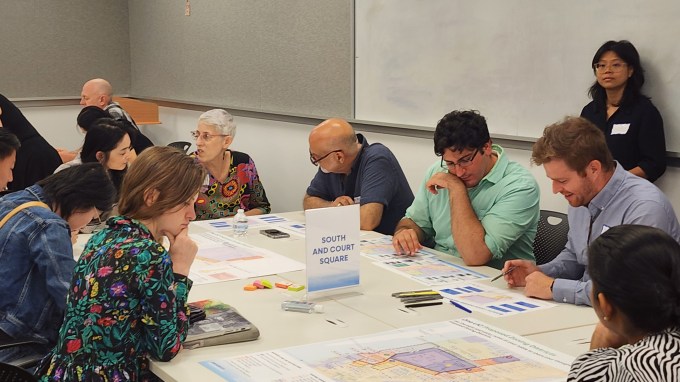
“It’s extremely important to have this plan. This is how you get public investment and private investment to make sure that the long sewage needs and resiliency needs are met in a way that you wouldn’t with piecemeal ULURP (Uniform Land Use Review Procedure), which is what we’ve had for a very long time.”
Hunters Point Parks Conservancy President Rob Basch said he had been involved in several plans to develop the neighborhood over the past eight years, adding that it is “about time that something gets done.”
Basch, who has openly advocated for more parks and green spaces in the area, said he is “tired of looking at empty spaces” in the neighborhood and voiced his support for the neighborhood plan.
“I always want more (green spaces), but I’m realistic, and you’re dealing with a lot of private land, and something is better than nothing. At this point, the community is losing. They’ve been losing for years and years and years by not having access to open spaces. We’re third from last in terms of green spaces in New York City.
“Something needs to be done and we support Council Member Won’s process. She’s got the city behind this, and that’s the only way we’re going to get this done. Having little groups to do something here or there is not the way. It needs to be a comprehensive plan together.”
Edjo Wheeler, Executive Director of Culture Lab LIC, said the high attendance levels on Monday night showed how much the community cared about the neighborhood plan, adding that it was pivotal to hear the voices of different sectors of the local community.
“A lot of these plans need to come from the ground up,” Wheeler said. “We need to hear from the community and have that lead the way as to where the zoning goes. I think this is amazing. I think it’s very rare and I don’t think it’s happened in our area when the city comes out and develops a plan for an entire neighborhood.”
“There’s an opportunity for people to work together with the developers, with the building owners, with the individual people who live here – that we can come together and make a plan. We have an opportunity to affect an entire neighborhood and they’re giving us a platform to do it. It’s crucial.”
“Our space is provided by Plaxall – Plaxall wants to develop their property. You can’t argue with that; of course, they want to. But there’s been very little talk about arts and culture in any of this. There are a lot of arts studios that are on the chopping block. A lot of artists are going to lose space.”
He added that the retention of the 561,000-square-foot Department of Education building on Vernon Boulevard as a space for arts and culture is essential for the neighborhood plan.
The neighborhood plan will culminate with plans for zoning changes, infrastructure investments and other information gathered during the planning process. Won said on Monday that the process would take around 18 months to complete.
The plan will undergo a scoping hearing over the summer, allowing all affected and interested parties to submit comments on the proposals. Won, the DCP and WXY Studios will then hold further town halls and community focus meetings to solicit further community feedback before a draft neighborhood plan is submitted next spring.
The draft plan will finalize zoning changes through ULURP, with new zoning, policies and programs expected to be announced by fall 2025.

